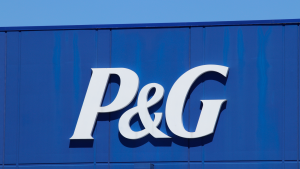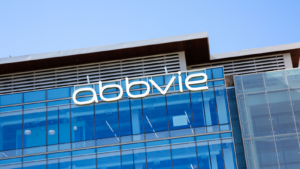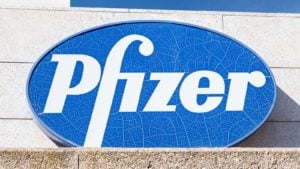
Finding equities with the potential for steady, long-term development is crucial. These seven prospects span a variety of industries and offer solid arguments for long-term investment. Additionally, these businesses range from consumer staple giants to aerospace titans and healthcare juggernauts. They provide a fundamental combination of operational efficiency, strategic vision, and market supremacy.
The first demonstrates its durability and innovative capability in the healthcare industry with a balanced expansion plan spanning both innovative areas. Meanwhile, its steady rise in organic sales and volume expansion demonstrates the second one’s capacity to handle market swings and hold onto market share.
Moreover, within the aerospace industry, the third one’s healthy order book and backlog demonstrate ongoing demand for its commercial aircraft. Similarly, the fourth one boasts financial indicators and outstanding success in obtaining foreign orders. Further, the fifth one is positioned as a strong force in the pharmaceutical industry thanks to its operational competence and leadership in therapeutic areas. Lastly, the final two candidates are chosen based on their emphasis on segment performance, growth strategies, and effective commercial execution.
Value Stocks to Buy and Hold: Johnson & Johnson (JNJ)

Innovative Medicine revenues for Johnson & Johnson (NYSE:JNJ) boosted by 2.5% globally to $13.6 billion, a remarkable 8.4% gain in the U.S. in Q1 2024. With the COVID-19 vaccine removed, operational sales growth increased by 8.3% globally and domestically. The market lead is attributed to growth in important brands, adoption of freshly released products, and vital gains in sales in specific therapeutic areas like oncology.
Additionally, global medical technology sales rose 6.3% to $7.8 billion. Growth was fueled by the electrophysiology and cardiovascular divisions’ strong performance and innovations in products like Impella 5.5 and Impella RP technology. The company’s diversified portfolio and capacity to advance in the healthcare sector reflect the segments’ balanced growth in innovative medicine and MedTech. Hence, this solidifies the company’s competitive advantage and growth potential.
Lastly, Johnson & Johnson has a considerable focus on product advancement, reflecting the investment of $3.5 billion (16.6% of sales) in research. Therefore, completing the Ambrx acquisition led to a strategic purchase of Shockwave Medical, illustrating the ability to grow through acquisitions and expand into high-growth sectors.
Procter & Gamble (PG)

Procter & Gamble (NYSE:PG) can expand its top-line from its current operations without the influence of forex, acquisitions, or diversions. This is reflected in the company’s continuous 3% organic sales growth. Despite changes in various locations, Procter & Gamble kept or increased its volume across several product categories. Notably, volume growth in North America has been consistently positive over the previous four quarters, with increases ranging from 2% to 4%.
Moreover, Procter & Gamble is expanding widely in several product sectors. Certain categories saw slower growth rates, while others — like oral care, home care, and grooming — saw double- or triple-digit increases in organic sales. Lastly, Procter & Gamble is expanding throughout a wide range of geographical areas rather than just one. Important regions, including Europe, Asia Pacific, LatAm, and North America, support organic sales growth and demonstrate the company’s worldwide reach and market penetration tactics.
Value Stocks to Buy and Hold: Boeing (BA)

In Q1 2024, Boeing’s (NYSE:BA) backlog included more than 5,600 commercial aircraft valued at $529 billion, reflecting a solid market for Boeing’s goods and services. During the quarter, Boeing Commercial Airplanes (BCA) recorded 125 net orders, with notable orders for the 737-10 and 777X types. The increase in the order book and backlog demonstrates Boeing’s capacity to draw in and keep consumers despite obstacles.
Additionally, Boeing announced $16.6 billion in sales for the quarter despite obstacles, including fewer 737 deliveries and the 737-9 grounding effects. Despite an 8% decrease in sales from the prior year, the company’s resilience in generating significant income in the face of hardship is noteworthy. Boeing Commercial Airplanes (BCA) experienced difficulties with its operational margin during the quarter, as it was negative 24.6%. However, the 737-9 grounding impact and fewer 737 deliveries were the leading causes.
To sum up, Boeing Defense & Space (BDS) delivered an operating margin of 2.2%, indicating a sequential increase with potential for improvement. Lastly, 60% of revenue came from the core business, which performed well in the mid-to-high single-digit profit range.
Lockheed Martin (LMT)

The defense budget for FY2024 benefits Lockheed Martin (NYSE:LMT) by providing considerable money for several projects. The budget allots money for secret operations, hypersonics, and multi-year weapon acquisitions. Global demand for Lockheed Martin’s goods is high, supporting the company’s international expansion.
For instance, the business received orders for F-35 aircraft from Singapore, Greece, and the Czech Republic. Moreover, Turkey may purchase 40 F-16s, demonstrating the company’s global reach. Hence, these purchases strengthen Lockheed Martin’s lead in the international military industry and boost top-line growth and diversity.
Solid measures of the company’s bottom line and financial standing include cash flow from operations, free cash flow, EPS, and segment operating profit. For instance, Lockheed Martin reported $1.7 billion in segment operating profit on 10.1% margins. Finally, the company has the fundamental capacity to turn sales into cash efficiently, reflected in the $1.3 billion in free cash flow it created during Q1 2024.
Value Stocks to Buy and Hold: AbbVie (ABBV)

AbbVie’s (NYSE:ABBV) fundamental capacity to continuously derive solid outcomes is based on its operational edge. The business delivered adjusted EPS of $2.31 for Q1 2024, 11 cents more than anticipated. The first quarter’s total net sales of $12.3 billion beat forecasts by almost $400 million, indicating an operational growth rate of 1.6% again. Moreover, the business’s 42.2% adjusted operating margin ratio shows effective cost control and operational effectiveness, bolstering profitability and future investments.
Further, strong performance across all therapeutic categories of AbbVie’s primary medicines is a crucial factor in the company’s commercial lead. Skyrizi and Rinvoq have become industry leaders in immunology, securing a sizable portion of the market and exhibiting strong revenue growth rates. The business’s portfolios for neurology and cancer are expanding rapidly as well; drugs like Venclexta, Vraylar, and Botox Therapeutic are dominating their respective markets.
In short, AbbVie has a solid basis for long-term growth and global expansion because of its unique pharmaceutical offerings and market-leading positions in several therapeutic categories.
CVS Health (CVS)

In Q1 2024, CVS Health (NYSE:CVS) derived $4.9 billion in operational cash. The timing of Medicare payments is the reason for the weaker results against Q1 2023. However, the company’s sharp cash flow indicates financial stability. Specifically, CVS Health has solid financial health, with around $1.9 billion in cash in Q1 and a focus on sustaining investment-grade ratings.
Indeed, every segment of CVS Health focuses on meeting financial targets and carrying out its objectives in a way that demonstrates operational effectiveness. The Pharmacy & Consumer Wellness division had a roughly 3% rise in revenue, primarily due to the increase in prescription volume and vaccine contributions. Notwithstanding a roughly 10% decline in sales, the Health Services division saw growth in specialty pharmacy and the purchase of Oak Street Health and Signify Health.
On the other hand, innovative pharmacy formats and adopting biosimilars through Cordavis are just two examples of strategic initiatives. Therefore, these highlight CVS Health’s forward-thinking mindset and dedication to generating growth and value.
Pfizer (PFE)

In Q1 2024, Pfizer (NYSE:PFE) had an 11% increase in operational revenue, excluding the contributions of Comirnaty and Paxlovid. Important products that helped boost income were Abrysvo, Eliquis, and Vyndaqel. In this case, the adjusted gross margin increased to 79.6% from Q1 of the previous year by 530 basis points. Revenue growth was fueled by Pfizer’s strong, enterprise-wide commercial execution and concentration on important products and markets.
Moreover, Pfizer’s ability to gain market share and revenue through successful commercialization methods reflects its ability to launch new drugs like Abrysvo and maintain the growth of well-known blockbusters like Eliquis. Pfizer’s oncology revenues increased operationally by 19% in Q1 2024 compared to Q1 2023. Notably, a portion of this rise was attributed to purchasing four Seagen in-line products.
Overall, treatments like Xtandi for prostate cancer, Lorbrena for a specific type of advanced lung cancer, and Padcev for advanced bladder cancer are seeing rising demand and continuous growth.
As of this writing, Yiannis Zourmpanos held long positions in JNJ, CVS and PFE. The opinions expressed in this article are those of the writer, subject to the InvestorPlace.com Publishing Guidelines.





